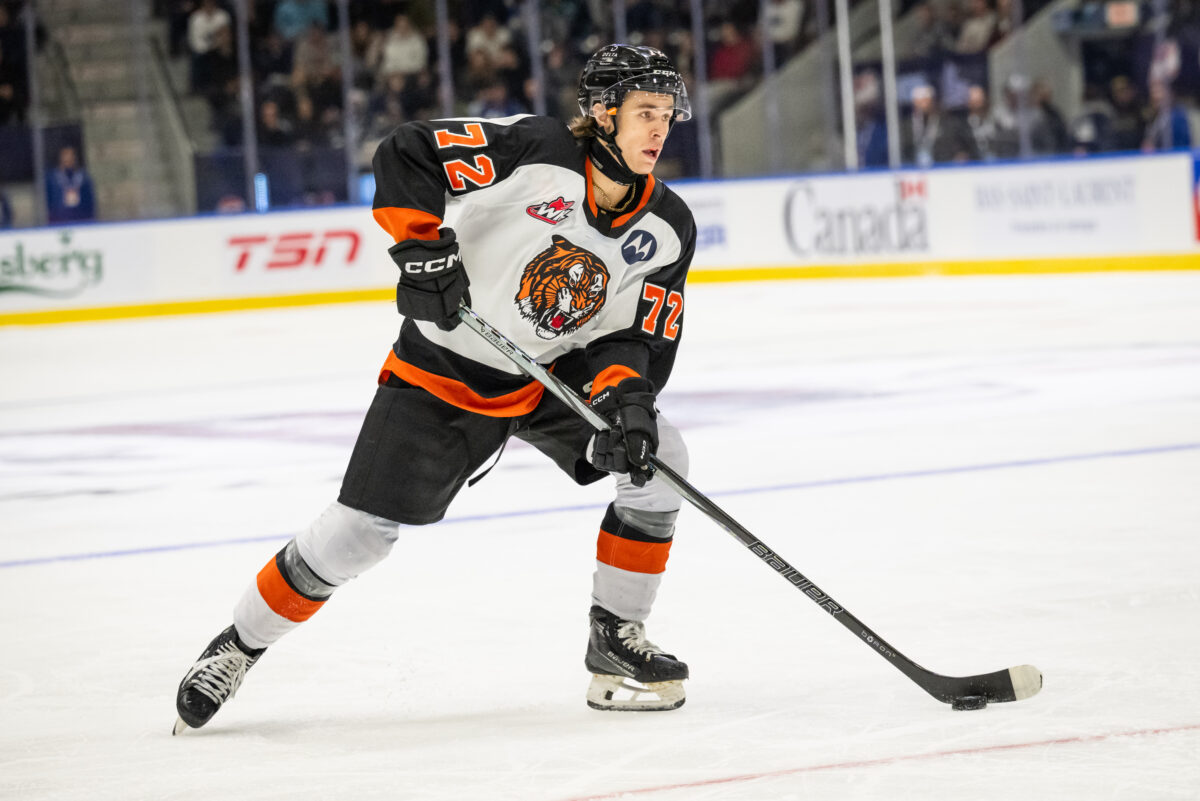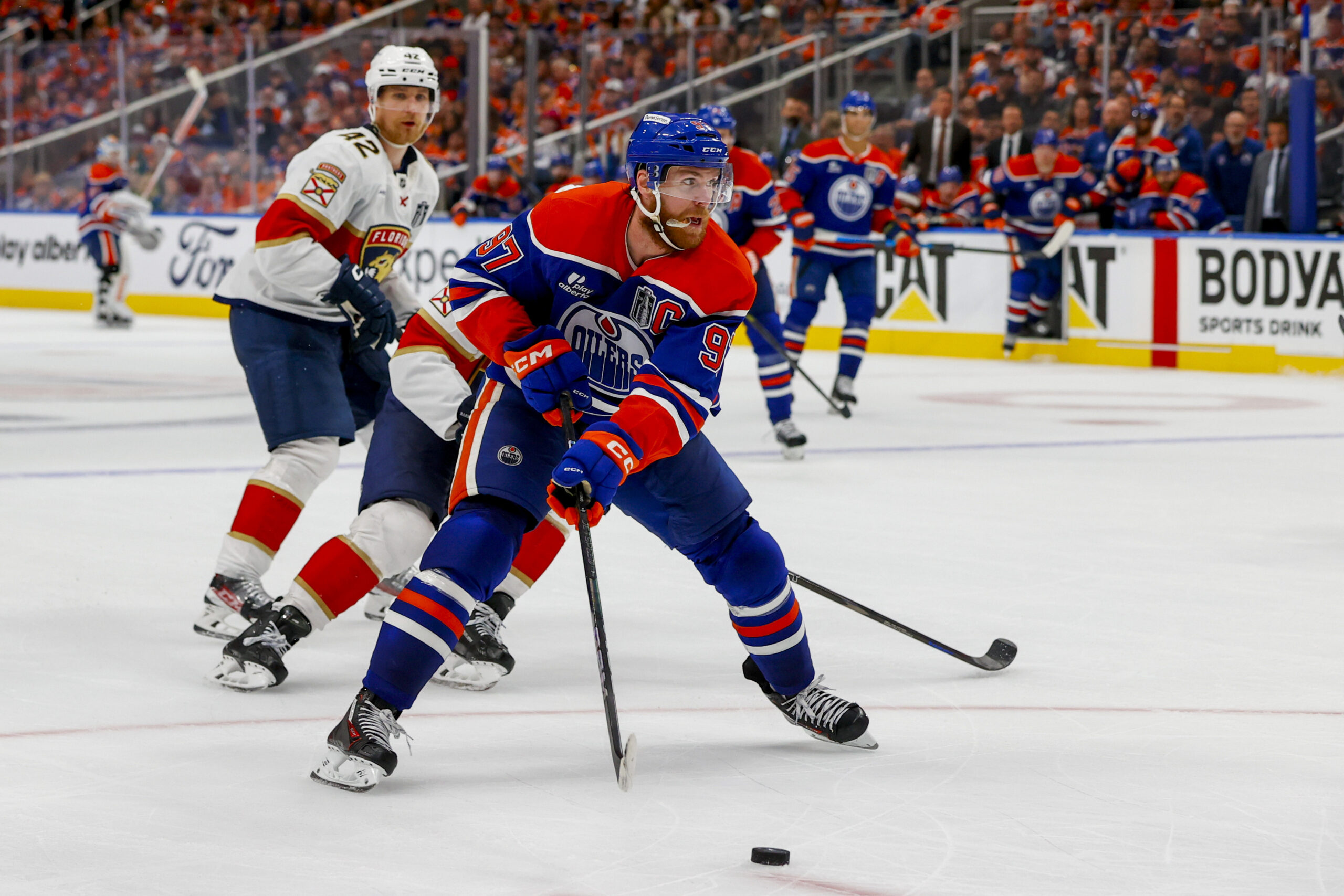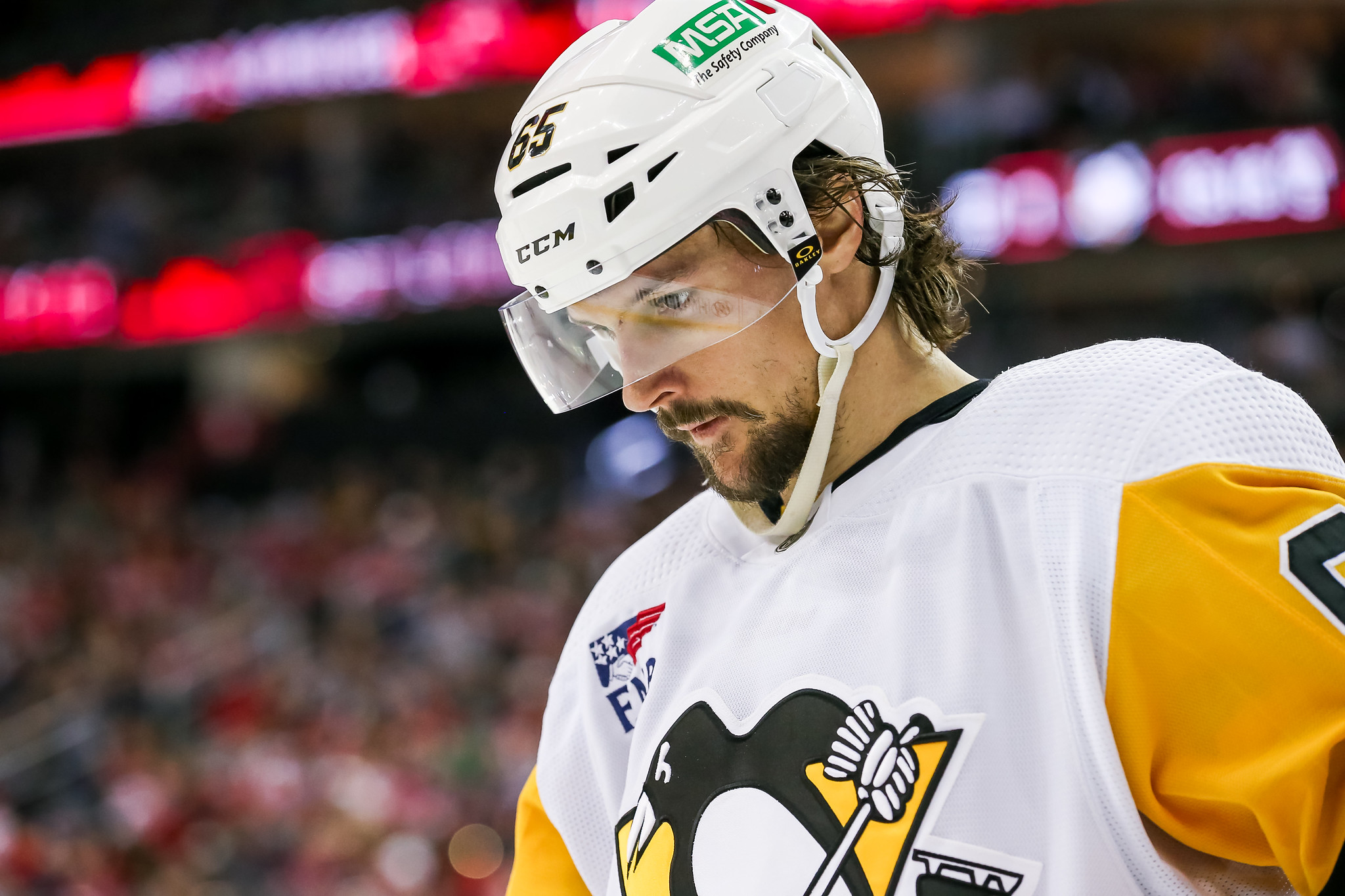It was rumoured for months, but on July 8, 2025, it was finally confirmed that Gavin McKenna, the projected top pick in the 2026 NHL Draft, is heading to Penn State University. Ever since the NCAA changed its ruling regarding Canadian Hockey League (CHL) athletes, it was a day that many junior hockey fans dreaded, and it’s hard not to assume the worst is coming. His departure leaves the Medicine Hat Tigers, his former junior team, in a very tough spot, but raises even more questions about what will happen to junior hockey in the future.
Plenty has already been said about the move. Some people see it as a massive win for college sports and hockey in general, while others fear that this could result in the death of junior hockey as we know it. For the most part, the fear is vastly overblown; of the hundreds of players in the CHL, only around 150 are heading to college in 2025-26, and only a fraction of those were not in their final year of junior eligibility. The CHL will be fine and has already adapted its rules to accommodate the incoming and outgoing talent.
However, a big question still remains unanswered – how many stars will follow McKenna? It was recently reported that he signed a name, image, and likeness (NIL) deal valued at around $700,000, which is money that even the richest teams in the CHL can’t replicate. But signing such a lucrative contract demands instant results. If McKenna struggles as a freshman in the NCAA and slips out of the consensus first overall choice for 2026, it’s unlikely that more high-profile CHL players will follow his lead, no matter how rich the offers are. McKenna will be under the microscope all season, and his performance will impact who decides to follow his example.
Penn State’s Offer Is a Massive Gamble
McKenna’s announcement was seen as a coup for college hockey. There arguably hasn’t been a bigger name in NCAA hockey since Jack Eichel in 2015 with Boston University. Even then, it’s hard to compare the two, since Eichel never overtook Connor McDavid as a potential first overall pick. There really hasn’t ever been a player in college who compares with the profile of McKenna. Adding him to Penn State’s program seems like a can’t-miss recruit.
However, it’s also a massive gamble that has the potential to blow up in Penn State’s face. Let’s start with the money. McKenna’s six-figure deal is more money than some junior clubs see in years; the Swift Current Broncos, another Western Hockey League (WHL) team, announced a profit of around $155,000 for the 2023-24 season. Not all teams run such a tight budget, but even for the richer teams, that kind of cash is a non-starter. “It’s exactly the thing that the OHL right now can’t compete with,” London Knights radio voice Mike Stubbs said to Global News back in November 2024. “They cannot pay their players other than the stipend that they get. Which is basically gas money.”
That kind of money will draw plenty of potential recruits, but that’s ignoring the internal NIL budgets that every Division 1 team carries. According to a recent survey among 20 power conference schools, the NIL hockey budget averaged about $550,000, or roughly $21,000 per player. Michigan State, the runner-up for McKenna’s services, reportedly offered $200,000-$300,000. That’s still a massive contract for an undrafted hockey player, but instead of eating up their entire pot and then some, it still allows the program to pursue other top players. Penn State, on the other hand, had to take money from other sports, like basketball or football, which will likely bring bigger profits. They also recruited Luke Misa, Lev Katzin, Nolan Collins, Josh Flemming, Shea Van Olm, and 2025 first-round pick Jackson Smith from the CHL, who were also likely offered attractive NIL deals.
One possible reason that Penn State has made a significant commitment to their hockey program is that one of its alumni is Terry Pegula, owner of the Buffalo Sabres and Buffalo Bills. He was instrumental in helping fund Penn State’s $102-million arena in 2012, which helped them achieve Division 1 status in hockey and was intended to attract the best hockey talent to the program. It’s now a massive selling feature for potential recruits, and while the arena was a gift – Pegula holds no ownership over the building – it wouldn’t be surprising if he still has some sway in the hockey side of Penn State.
By adding McKenna, Penn State is betting that its hockey program will become a top destination for recruits from the CHL and elsewhere. But that’s a lot of money to spend on something that’s still not a sure thing, because no matter how good a player is before coming to college, the NCAA is a different beast.
Freshmen Have an Uphill Battle in College
Last season, McKenna wowed fans with an incredible 129 points in just 56 games, finishing second in the WHL behind 20-year-old Andrew Cristall’s 132 points and placing him 10th among all 17-year-olds in league history. That level of production puts him alongside McDavid and Connor Bedard, making him an easy choice for the Four Broncos WHL Player of the Year Award and CHL Player of the Year last season. Now, some wonder if he can put up numbers similar to Macklin Celebrini or Adam Fantilli as a freshman in the NCAA.

However, McKenna’s decision was more about challenging himself. “I think [college] honestly just makes the jump [to the NHL] easier,” he said in his announcement. “Going against older, heavier, stronger guys, I think it really prepares you.” Penn State’s head coach, Guy Gadowski, sees the drive in the young star. “I think when you talk about Penn State specifically, I think he has a bit of a pioneering mindset,” he said. “He wants to be the first, and I think he’s very comfortable with that pressure.”
There’s no question that McKenna is a special talent, but he may be underselling how much of a change the NCAA is from the WHL. Not only is it a grittier, faster game, but the age and size difference are significant. At 6-foot-0 and a lean 165 pounds, he was perfectly average for the WHL, where the average age is 18.5, but the NCAA has a much steeper learning curve, where the average age is 22. “Don’t tell people in Canada,” said New York Rangers’ head coach David Quinn. “They don’t want to hear that college hockey is at a higher level than the CHL. It just is better hockey. It’s deeper. It’s older. It’s just a man’s game.”
Aside from Celebrini and Fantilli, most freshmen have struggled to replicate their junior numbers in college. Last season, James Hagens earned early nods for first overall in 2025, but couldn’t keep up the pace, ending the season with 37 points in 37 games and falling to seventh overall at the draft. Matty Beniers was a threat for the top choice in 2021 as a U. Michigan freshman, but only recorded 24 points in 24 games and fell to second behind dominant defenceman Owen Power.
Related: A New Route to the NHL? Gavin McKenna’s NCAA Shift Sends a Message
The biggest concern is McKenna’s size. Celebrini and Fantilli were significantly stronger in their draft years, weighing 190 and 187 pounds, respectively. Penn State’s newest recruit is built more like Kent Johnson, who went fifth overall in 2021 after putting up 27 points in 26 games. But there’s also the fact that McKenna will be taking classes while playing hockey. TSN’s Craig Button put it very plainly in an article by Paul Svoboda: “If you’re not a good student, then you don’t want to be a student-athlete, and the NCAA is not good for you.” Balancing high school courses with extracurricular activities is much easier than college-level courses with high-end college sports, which is why most college athletes stay for several seasons before turning pro. McKenna is set to turn pro in 2026-27, especially if he goes first overall.
But, given his size and status, McKenna is likely looking at a point-per-game or slightly more with Penn State this season, which would be 40-50 points. That would, frankly, be a disappointing result from a player with the ‘generational’ tag. It would also give a leg up to his biggest competition: CHL stars like Ryan Roobroeck, Ethan Belchetz, or Daxon Rudolph, who are all primed to have massive seasons in 2025-26, or Swedish phenom Ivar Stenberg, who played 25 pro games in the Swedish Hockey League (SHL) last season. All those players will be hot on his tail, meaning he won’t have any time to adjust to the game; he’ll need to be practically perfect out of the gate. Can he do it while only playing 40 games?
CHL Is Set Up Well for Development
CHL president Dan MacKenzie knows the pressure junior leagues are under now, but he’s been much more level-headed than others. “We’re not going to probably know the full impacts of this rule change in player movement trends for at least a year or two, maybe three,” he said to Front Office Sports. “At the end of the day, we’re going to aggressively defend our position as the top development league in the world. We know how to produce elite-level hockey players, and I don’t think that’s going to change.”
That model has always followed a formula similar to the NHL’s, providing longer schedules and more opportunities to play against the best players in the world. “That’s the reason I didn’t want to go (the NCAA) – you play 30-some games,” said Nathan MacKinnon in 2016, three years after going first overall. “Junior is double that, plus playoffs, plus Memorial Cup, plus World Juniors. That’s like 100 games. Way different.”
Now that the newly-proposed Collective Bargaining Agreement will include an 84-game schedule, getting used to playing more games could be much more beneficial. “The allure of NIL for these young Canadians makes sense,” admitted an unnamed source close to the CHL and NHL, talking with Nate Duffett of RG.org. “But I’d rather have a better developmental year in the CHL and set myself up for a longer NHL career than take the quick payday for 1-2 years of playing at Boston College. It isn’t like these high-end players are going to stay long enough to finish their degree…I don’t get the benefit of playing 40 fewer games in a new league, where it could take an adjustment period in your draft year. If you want to go to the NCAA, go after you get drafted for a year of playing against older players, not when you’re 17 and a potential first-overall pick.”
The CHL has been a backup option for college players before. Tyler Boucher was one of the most recent, leaving Boston University just 17 games into the season in favour of the Ottawa 67’s after signing an entry-level deal with the Ottawa Senators. The league will remain open for those who leave, too, if, according to MacKenzie, “it works out that their NCAA experience isn’t what was promised.”
Whether he likes it or not, McKenna has made himself the face of the new CHL-NCAA agreement, and his every movement will be under intense scrutiny. It’s not only a big gamble for Penn State, but also McKenna, who likely has no idea what he’s getting himself into. If his decision pays off, there could be sweeping changes across the board for the junior system, leading to new agreements not dissimilar to the old sponsorship program the NHL used to have, now between junior and college teams. But if McKenna struggles, others will need a lot more convincing to follow in his footsteps, even if the majority of other athletes do fine. The impact of the agreement will take years to sort out, but this season, it’s all on McKenna’s shoulders.
Sign up for our FREE NHL Prospects & Draft Substack newsletter




